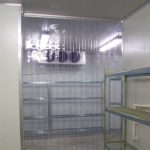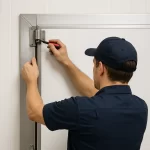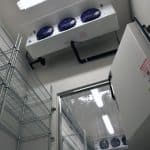Maximising Freezer and Coolroom Capacity for Commecial Business Owners
- 10 May 2016
In leveraging every square centimetre of available space in a coolroom, business owners adopt a three-dimensional storage strategy. They do this to save energy and maximize freezer and coolroom capacity. First of all, if the stored items, food or other perishables, were to be placed on the floor, then thermal leakage would take place unless the floor was insulated. So we return to the notion of raising storage upward, of adding shelves and specially designed racks. The eddying currents of cool air do the rest, circulating around the enclosed chamber. Of course, these are no ordinary storage racks.
Maximize Floor Space
A temperature-regulated zone works best when specially designed furnishings are installed. The wire-thin materials efficiently hold meat and produce while ensuring no energy-blocking walls obstruct airflow. Freezer and coolroom capacity is further compacted by adding mechanical assemblies to this condensed but open shelving configuration. One idea is to place the racks on a series of rails and casters. The space between each unit can then be adjusted manually to optimise airflow. This, on top of high-density wire shelving, keeps productivity on the up while thermal losses sink below the point where they’d incur a red mark on an energy audit.
Height-Enhanced Cooling
Evaporators and vents are strategically installed to take advantage of the layout of a temperature-regulating room. Vertical space takes priority here, with the added height encouraging the placement of taller racks. Take care, too much height only creates a void, an area where stacked shelves can no longer be safely installed. Instead, we’re creating greater energy losses. The best strategy is to balance vertical height against product type and allowable rack stacking height. Reinforce this methodology by installing exterior support structures, if possible, beams that won’t obstruct airflow. The more open the storage area is, the better the cooling system works, but don’t stretch this guideline beyond its practical limits by taking that vertical clearance value too high.
Just as a loading supervisor carefully coordinates the stacking of frozen product in a refrigerated truck, freezer and coolroom capacity must be properly managed. It’s not advisable to overfill a commercial-grade freezer room, for example, because this is a work area, a place where staff members and forklift trucks must have access, but access corridors should be limited. Partner this layout strategy with hooks, wireframe shelves, and plastic-coated alloys to maximize capacity. Then, when the cooling unit activates, less energy will be required to take advantage of this condensed layout.
Mark Connelly
C&M Coolroom Services
E-mail : markconnelly@cmcoolrooms.com.au
Mobile: 0412 536 315


